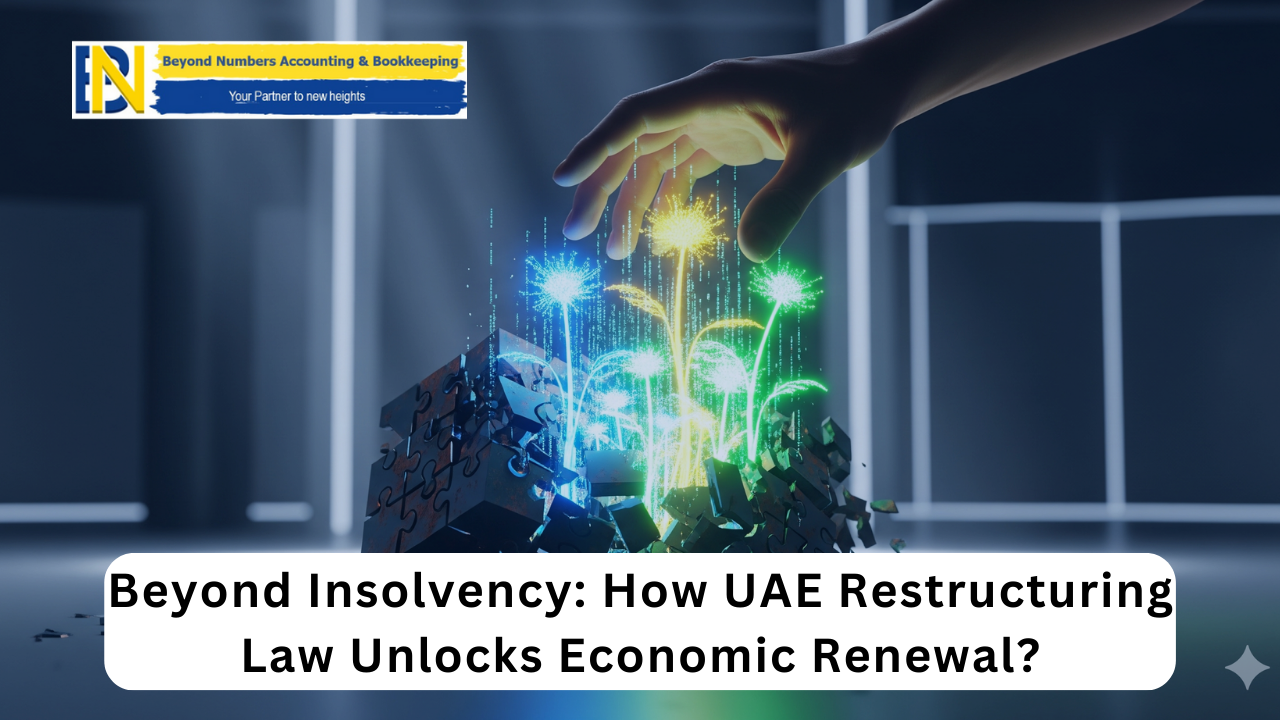Rethinking business failure is a strategic imperative in the UAE’s evolving economic landscape. Historically, corporate failure was often viewed as a final, irrecoverable event, leading to immediate liquidation. However, a modern and progressive approach, enabled by the UAE’s new bankruptcy and restructuring laws, positions insolvency not as a terminal point but as a potential catalyst for innovation and economic renewal.
This shift in perspective is rooted in a robust legal framework designed to promote a “rescue culture” over a “liquidation culture,” thereby preserving enterprise value, protecting stakeholders, and facilitating the re-allocation of resources. The updated provisions on financial restructuring and insolvency allow viable businesses in distress to reorganize, shed unsustainable debt, and emerge as leaner, more agile, and ultimately more competitive entities.
How Restructuring & Insolvency Drive Innovation:
The new UAE legislative framework provides a structured pathway for companies to address financial distress, which in turn fosters a climate conducive to innovation. This is not about supporting inefficient businesses but rather about leveraging crisis as an opportunity for strategic transformation.
- Forced Efficiency and Operational Streamlining: Financial distress necessitates a critical review of all business operations. In order to survive, companies undergoing restructuring must identify and eliminate inefficiencies, discontinue unprofitable business lines, and streamline their core processes. This intense period of operational scrutiny often leads to the adoption of new technologies, more efficient workflows, and a more focused strategic direction, ultimately creating a more innovative and effective organization.
- Recycling of Capital and Assets: The legal process of restructuring allows for the orderly sale of non-core or non-performing assets. This not only generates capital to repay creditors but also ensures that these assets—including machinery, intellectual property, and even human capital—are re-injected into the wider market. This recycling of resources benefits the entire economy, as these assets can be acquired by new, more innovative businesses that can utilize them more effectively, fueling new ventures and growth.
- Encouraging a Risk-Tolerant, Entrepreneurial Culture: A robust and predictable insolvency framework fundamentally changes the calculus for entrepreneurs and investors. Knowing there is a structured and non-punitive process for failure mitigates the personal and financial risks associated with starting a new venture. In the UAE, Federal Decree-Law No. 51 of 2023 on Financial Restructuring and Bankruptcy provides clear provisions for debtor-in-possession financing and a moratorium on creditor actions, which gives management the breathing space needed to craft a viable recovery plan. This legal safety net encourages a greater appetite for risk-taking, which is the very essence of innovation.
- Attracting Strategic Investment: The restructuring process provides a formal mechanism for new investors, particularly private equity and credit funds, to inject fresh capital into a distressed but fundamentally viable business. This “new money” often comes with strategic insights and new management, allowing the company to pivot and invest in innovative technologies or market strategies that it could not pursue under its previous debt burden. This type of strategic investment is crucial for transforming a struggling company into a future-ready, competitive enterprise.
Key Legislative Provisions & Their Impact
The modern bankruptcy law in the UAE, particularly the latest amendments, is a landmark move that aligns the country with global best practices. It shifts the focus from penalizing failure to rehabilitating the business, which is a significant factor in driving innovation.
| Provision | Impact on Business | How it Drives Innovation |
| Preventative Settlement | A pre-emptive, court-supervised process for businesses with financial difficulties but not yet at the point of cessation of payment. | Allows for proactive restructuring and strategic pivots before the business becomes unviable, preserving its innovative capacity. |
| Moratorium on Claims | A temporary suspension of creditor actions and legal claims against the business once restructuring proceedings begin. | Provides management with the necessary breathing room to focus on operational turnarounds and strategic planning rather than being consumed by litigation. |
| Debtor-in-Possession (DIP) Financing | Allows a company undergoing restructuring to secure new, priority financing to support its operations. | Enables businesses to fund critical investments in R&D or new products that are essential for their turnaround and future competitiveness. |
| Liability of Directors | Clarifies the conditions under which directors can be held personally liable, providing protection against good-faith business failures. | Reduces the fear of personal risk, encouraging directors and executives to undertake more ambitious and innovative strategies to save the company. |
In conclusion, the UAE’s evolving legislative framework on restructuring and insolvency represents a sophisticated understanding of the modern economic cycle. By reframing corporate failure not as a moral or legal condemnation but as a financial event with a viable solution, the law promotes a proactive culture of risk management, operational excellence, and, most importantly, innovation. It is this forward-thinking approach that will continue to reinforce the UAE’s position as a globally competitive commercial ecosystem.

